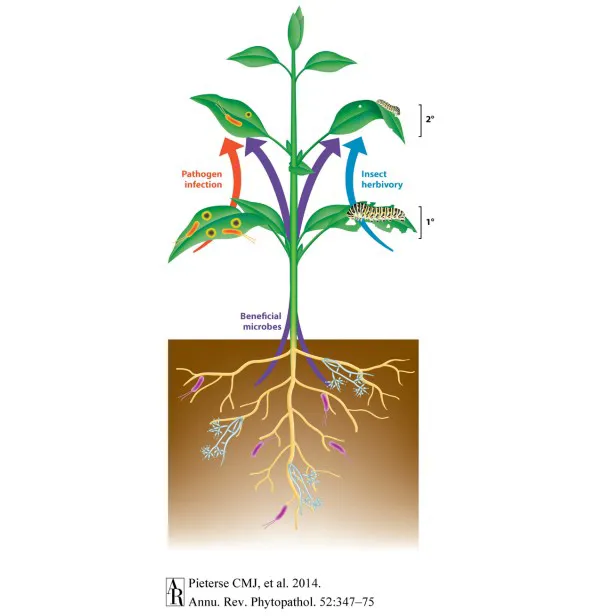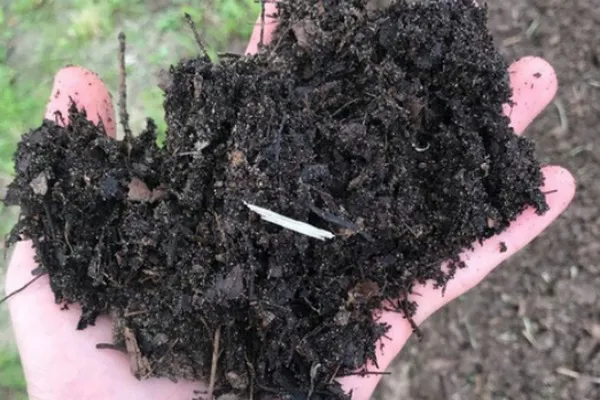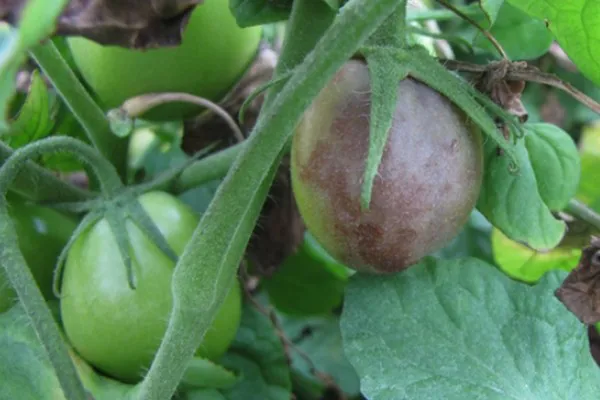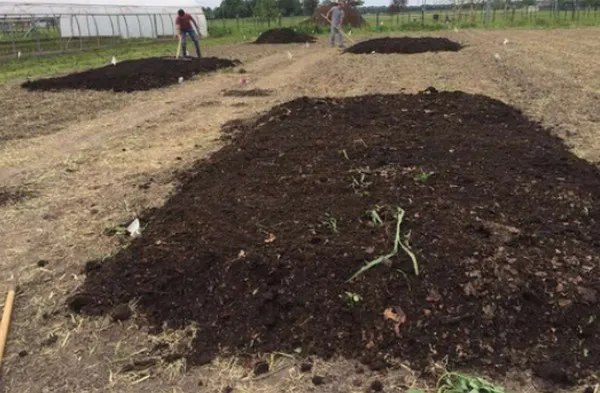Fresh organic tomatoes fetch high market prices, especially heirloom varieties that offer superior flavor and unique color patterns. However, a diverse and virulent complex of fungal, water mold, and bacterial pathogens threaten organic tomato production. Ongoing efforts to develop improved tomato varieties for organic producers have made significant progress toward new varieties that demonstrate stable, multi-gene resistance to several pathogens while retaining good flavor. The Tomato Organic Management and Improvement Project (TOMI): Part II, led by Dr. Lori Hoagland of Purdue University, builds on previous research (TOMI: Part I), which found that soil and root microbiomes play a substantial role in mediating crop disease resistance. The biological soil community interacts with the roots and can help provide a plant-wide (systemic) disease resistance against a wide range of pathogens.
What is the research about?
In this second phase of TOMI, researchers want to better understand the role of tomato genetics in promoting specific rhizosphere microbes that mitigate disease issues.
Microbes can help suppress pathogens directly via antibiotic or antifungal capabilities and also indirectly via induced systemic resistance (ISR), a phenomenon in which certain bacteria and fungi in the rhizosphere prime the whole plant for enhanced defense against pathogens (Pieterse et al., 2014).
 Figure 1. Schematic representation of biologically induced resistance triggered by pathogen infection (red arrow). Induced resistance involves long-distance signals that are transported through the vasculature or as airborne signals, and systemically propagate an enhanced defensive capacity against a broad spectrum of attackers in still healthy plant parts.
Figure 1. Schematic representation of biologically induced resistance triggered by pathogen infection (red arrow). Induced resistance involves long-distance signals that are transported through the vasculature or as airborne signals, and systemically propagate an enhanced defensive capacity against a broad spectrum of attackers in still healthy plant parts.
The project team is now integrating ISR traits protective against late blight and gray mold into the tomato breeding program.
This represents a new advance in the development of disease-resistant crop varieties. Many of the “disease-resistant” varieties of the 20th century possessed a single gene that conferred immunity to the target pathogen (“vertical” resistance), but pathogens often mutate and evolve to overcome the resistance gene.
“Horizontal” disease resistance, based on multiple genes that improve tolerance to pathogens through multiple mechanisms, is often not as “absolute” (disease symptoms may appear but do not become as severe or yield-limiting) but is more stable, in that it is harder for pathogens to evolve renewed virulence against these cultivars.
Project objectives and approach
The main objective of the project is to integrate three approaches that would help organic growers produce disease-resistant tomatoes with exceptional flavor for the local marketplace.
 Figure 2. Three-year-old leaf mold compost
Figure 2. Three-year-old leaf mold compost
Biological Control of Pathogens
- Investigate the efficacy of biological controls for various fungal pathogens in tomatoes.
- Identify soil properties, management practices, and organic amendments that promote disease-suppressive soils and enhance the efficacy of applied fungicides.
Induced systemic resistance
- Identify beneficial plant-microbial relationships that help induce systemic resistance (ISR) in tomatoes and incorporate these traits into breeding lines that will be used to develop new varieties.
Variety development
- Develop varieties with stable disease resistance and excellent flavor using a farmer-participatory approach.
- Selections will be made from breeding populations grown in trials across the US in collaboration with growers. This will be supported by analysis of breeding lines to verify the stability of disease resistance and assess regional adaptation.
 Figure 3. Late blight of tomato
Figure 3. Late blight of tomato
Key takeaways
Biological control of pathogens
There are several microbial-based fungicides for organic tomato disease management. A complete listing can be found at https://eorganic.org/node/35737. Organic amendments, such as leaf mold compost, can enhance populations of indigenous disease-suppressive soil microbes and improve the efficacy of applied microbial biofungicides. Using microbial biofungicides may reduce the need for copper in organic tomato production, directly benefiting soil health and water quality.
 Figure 4. Tomato trial research plots
Figure 4. Tomato trial research plots
Induced systemic resistance
Some tomatoes possess genes that help them generate a plant-wide resistance to harmful pathogens (ISR). Roots of ISR-responsive lines release substances that signal and host beneficial microbes. Transferring the genes for robust ISR response into new varieties would add yet another potent mechanism for resilience to multiple pathogens.
Variety development
University breeders have identified and integrated new genetic sources of disease resistance and provided improved lines for farmer-breeders to work with. Several advanced breeding lines show promise for the Western coastal region, with high yield, good flavor, and disease resistance. Research is ongoing.
Source: ofrf.org
